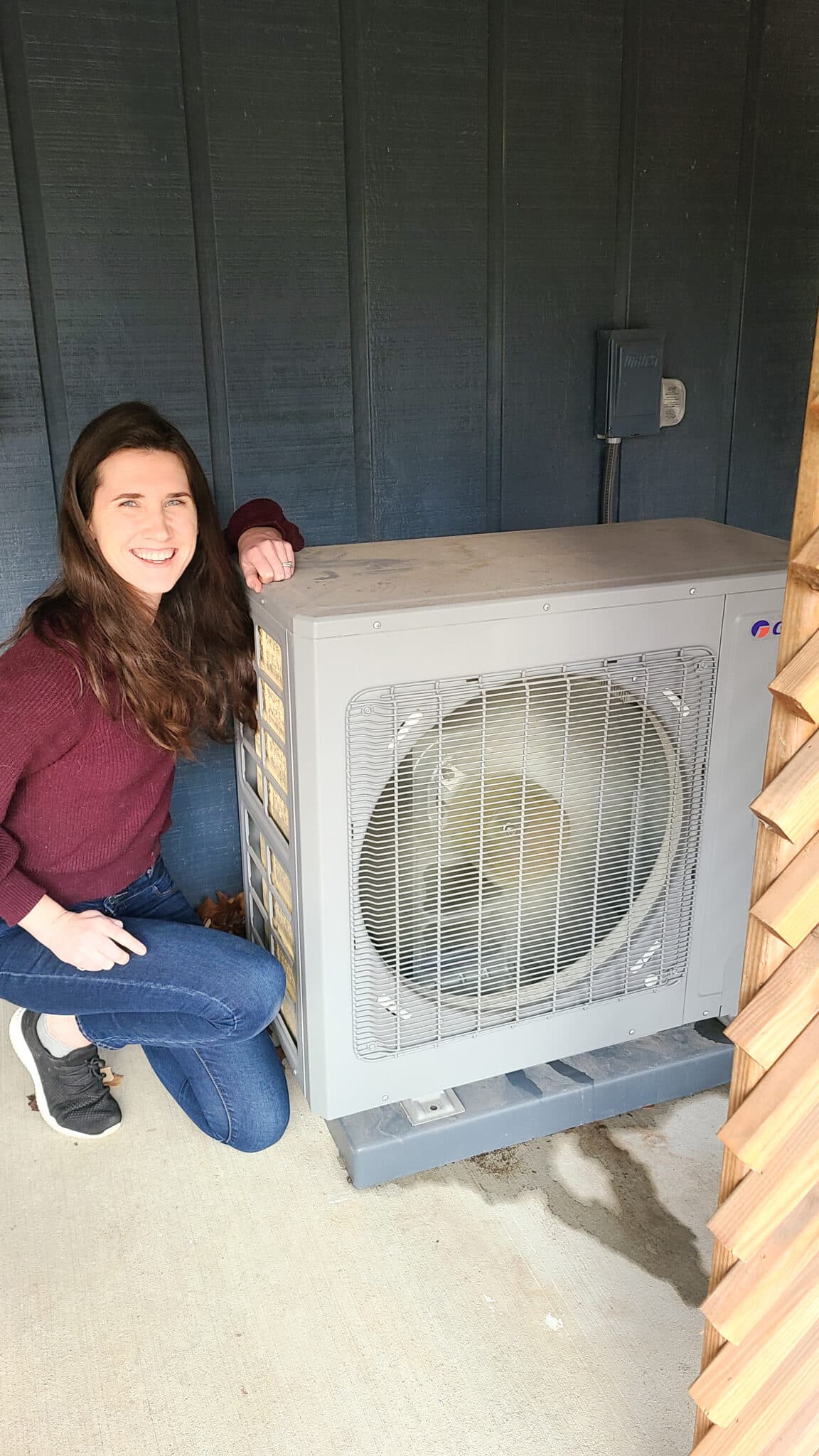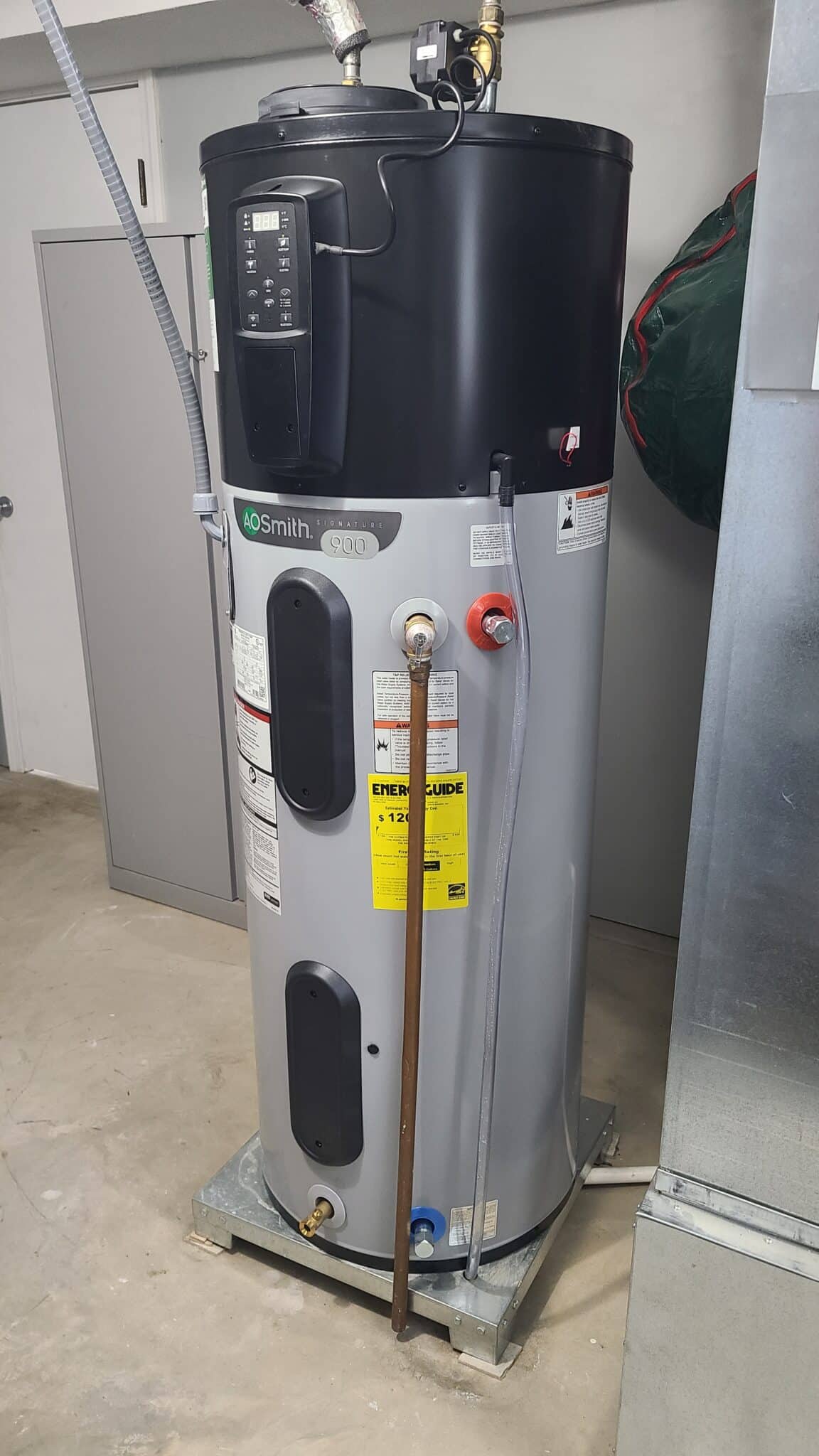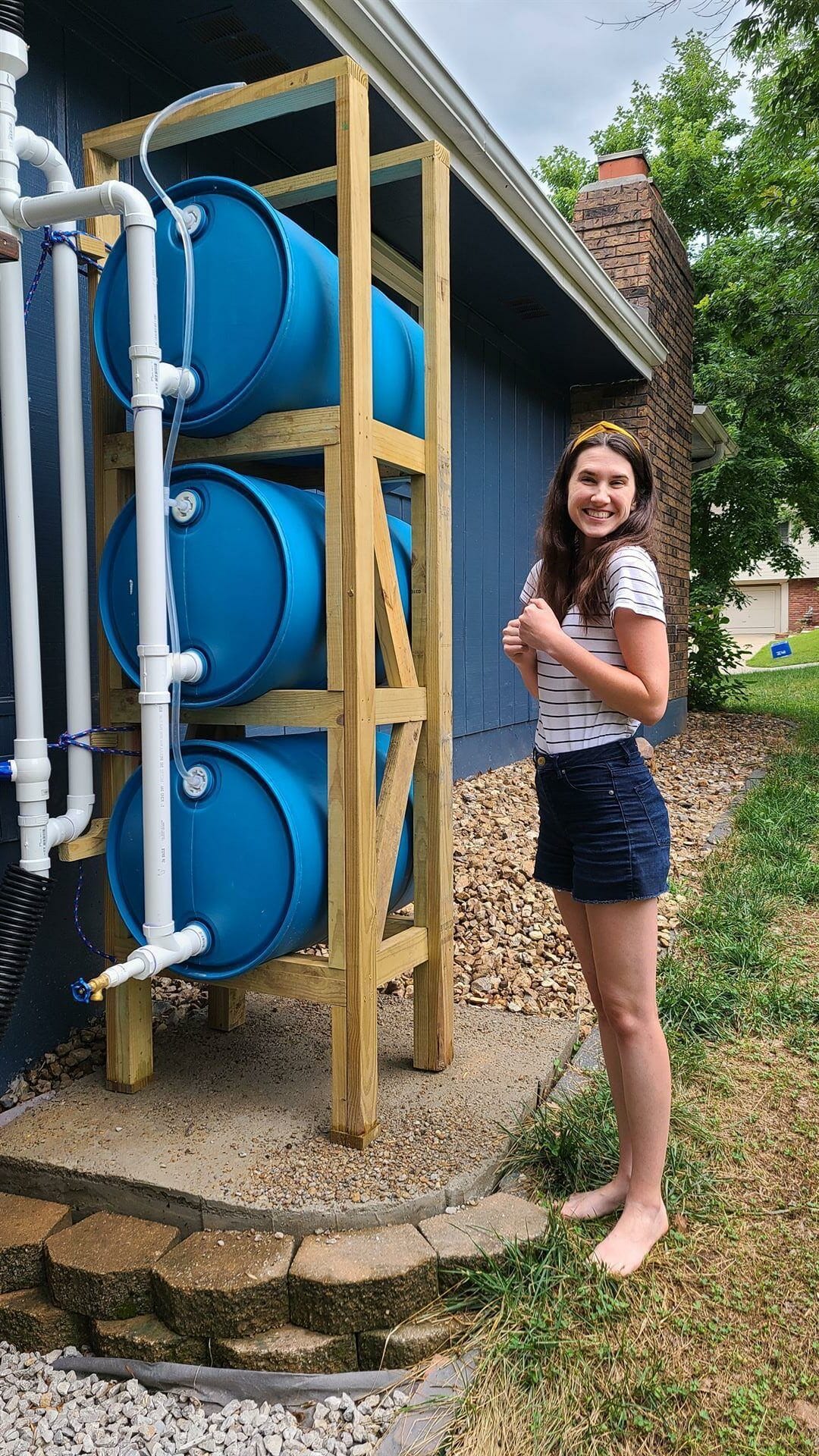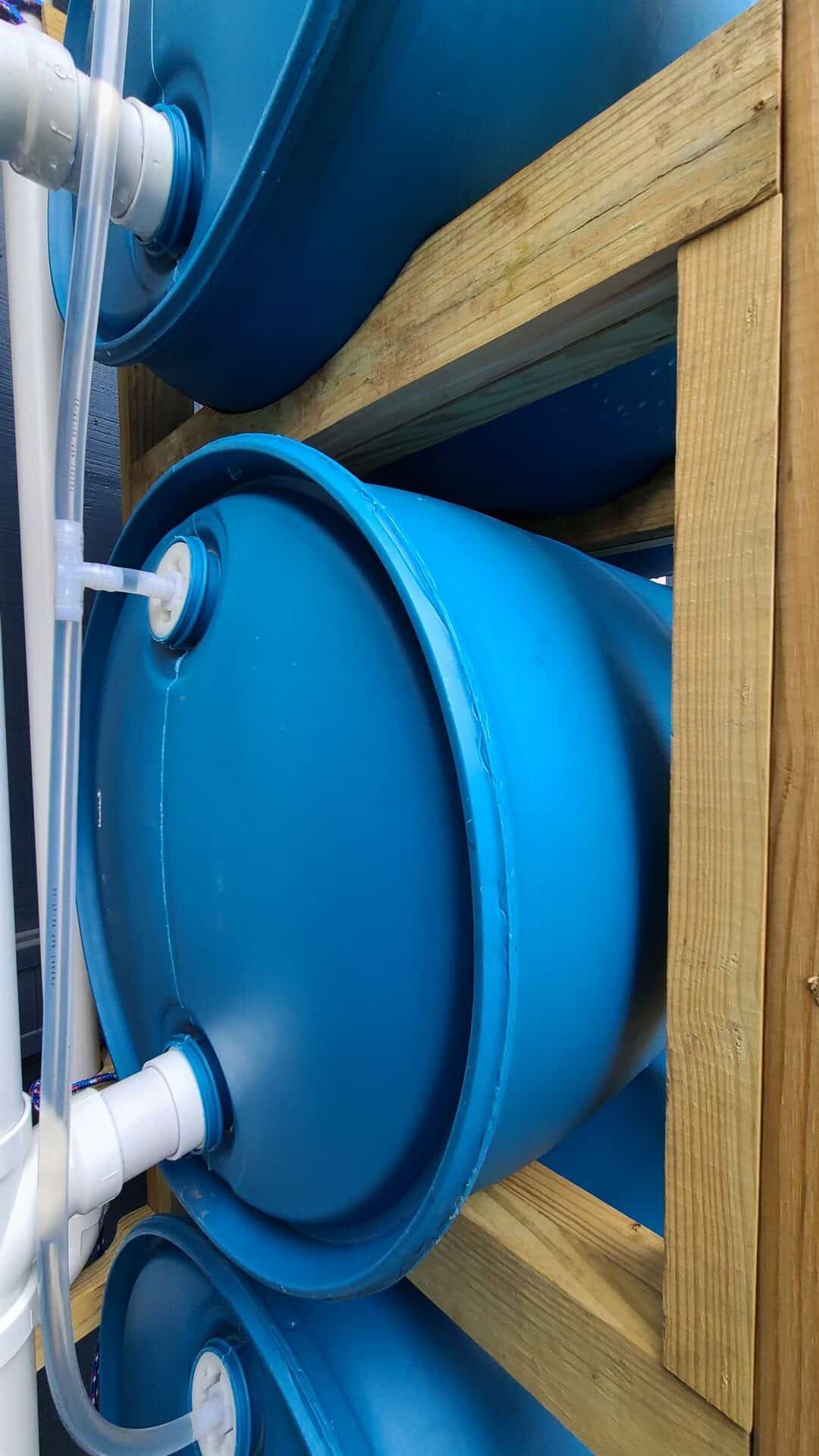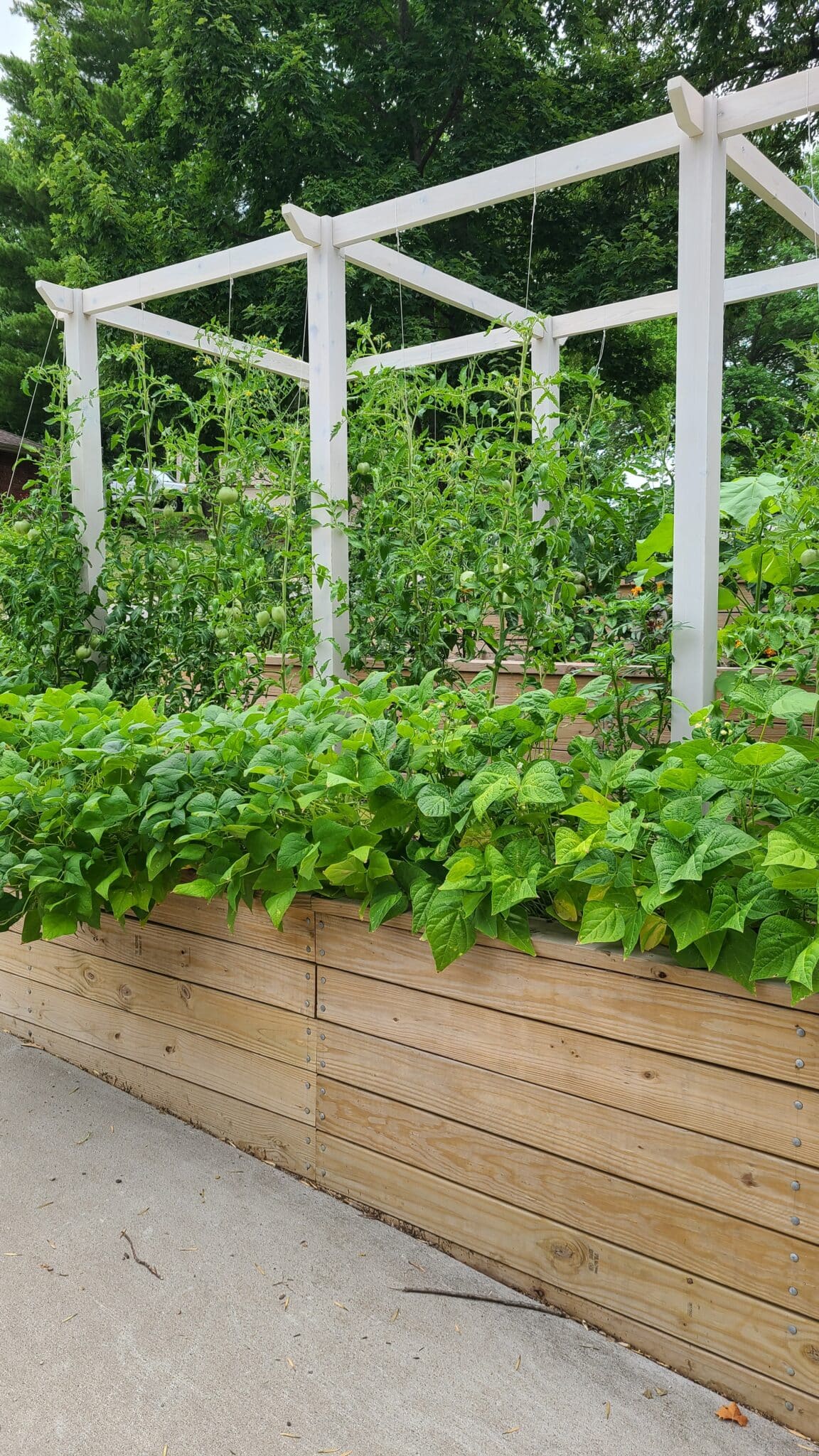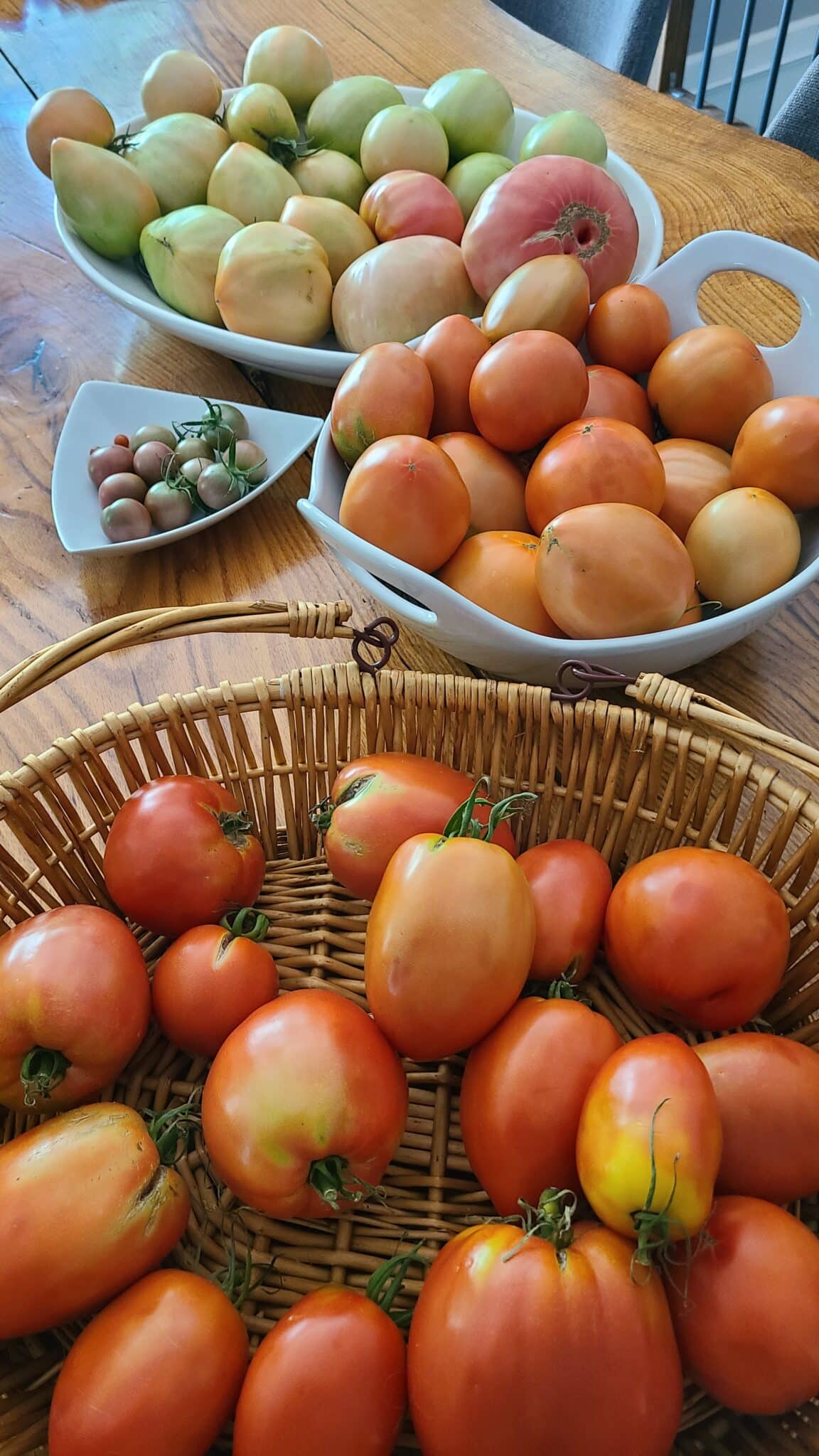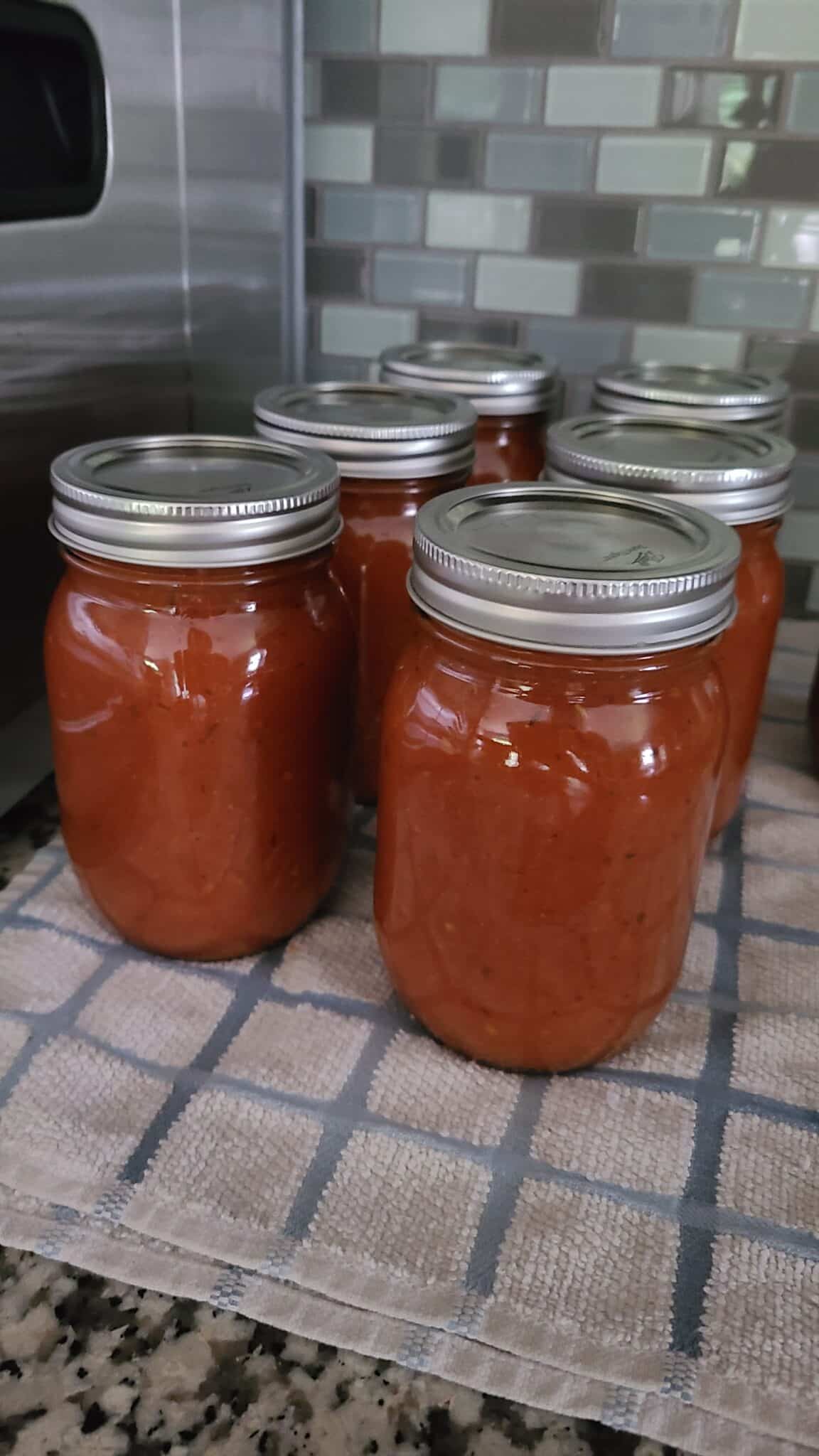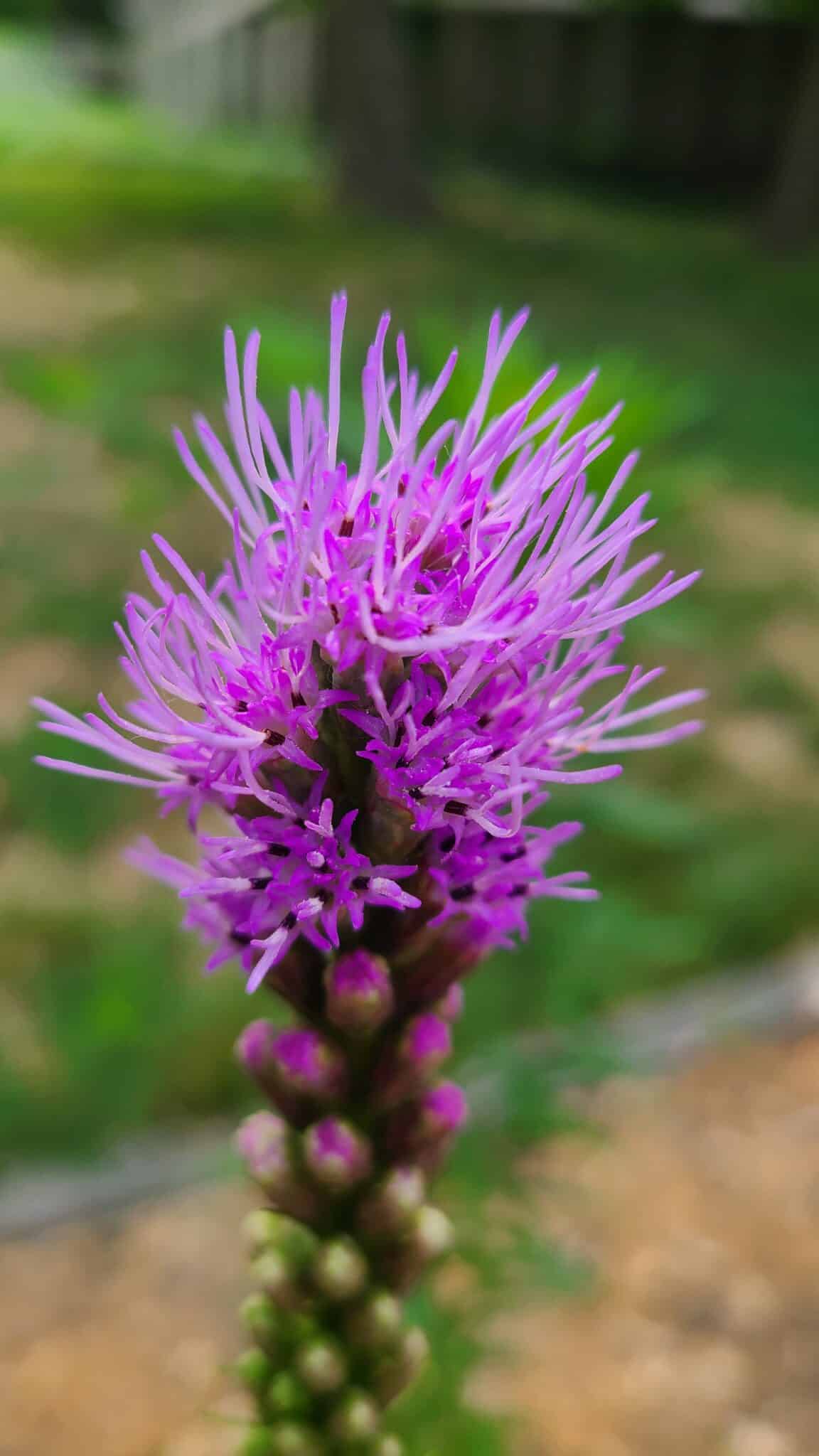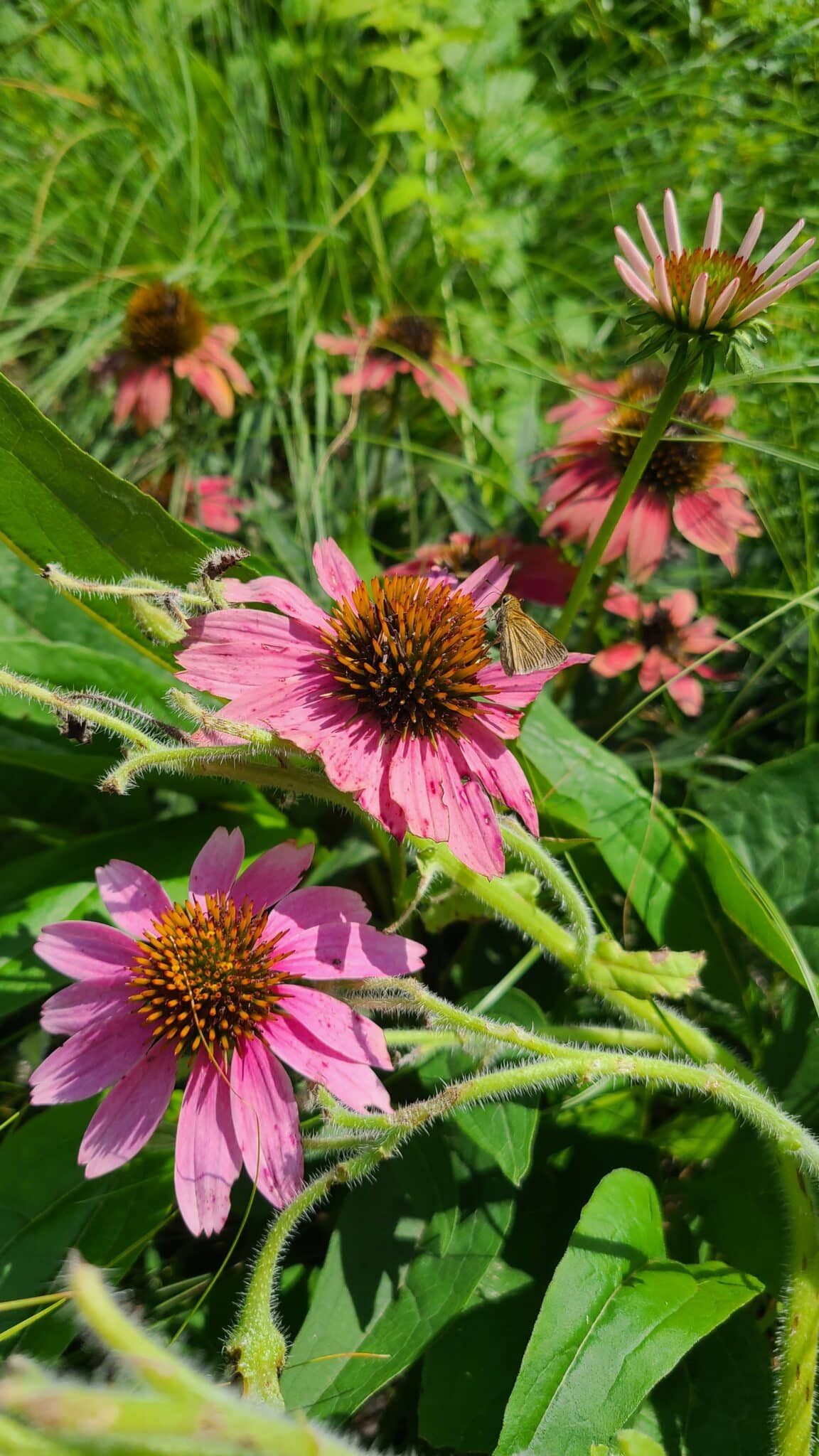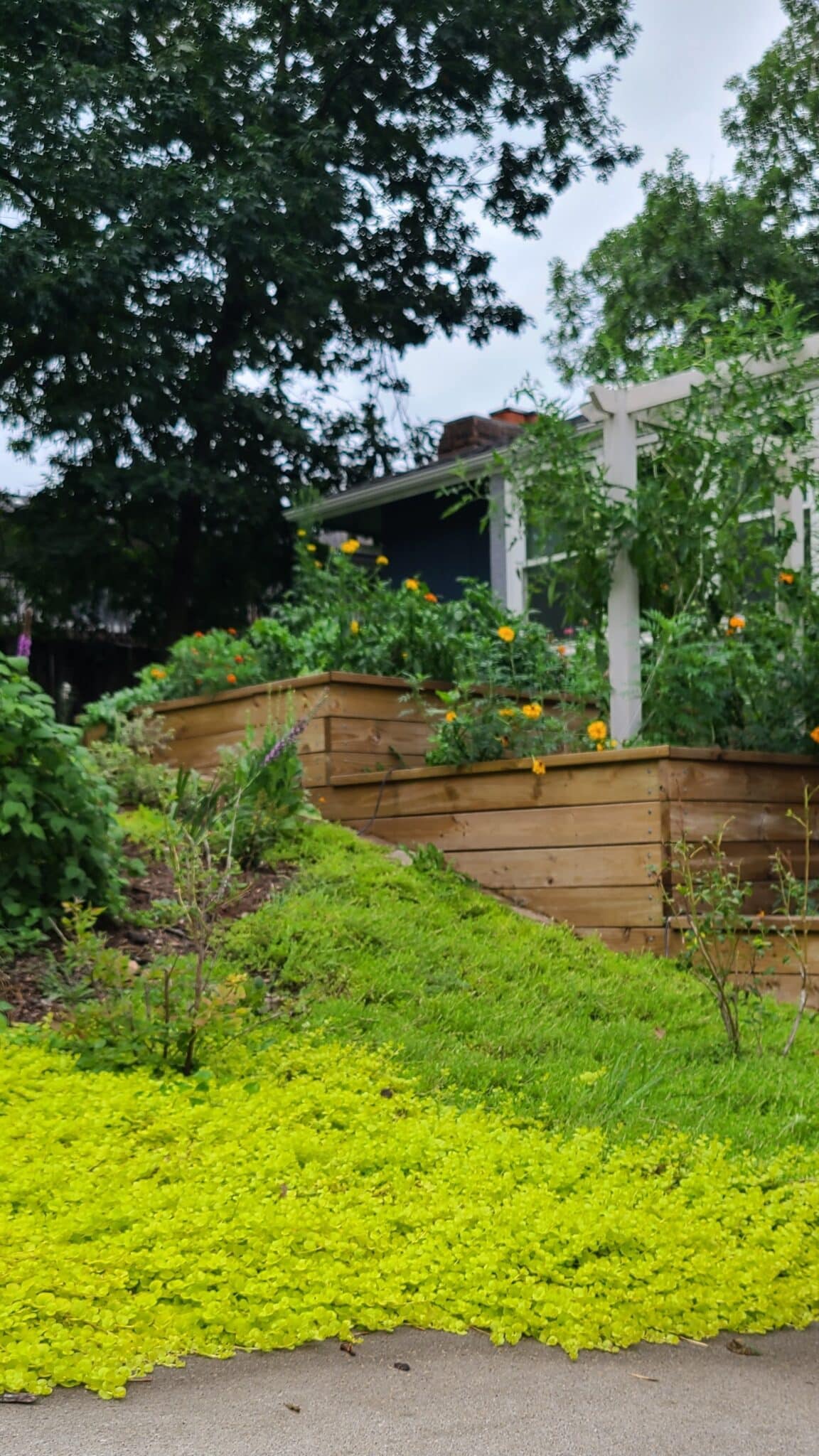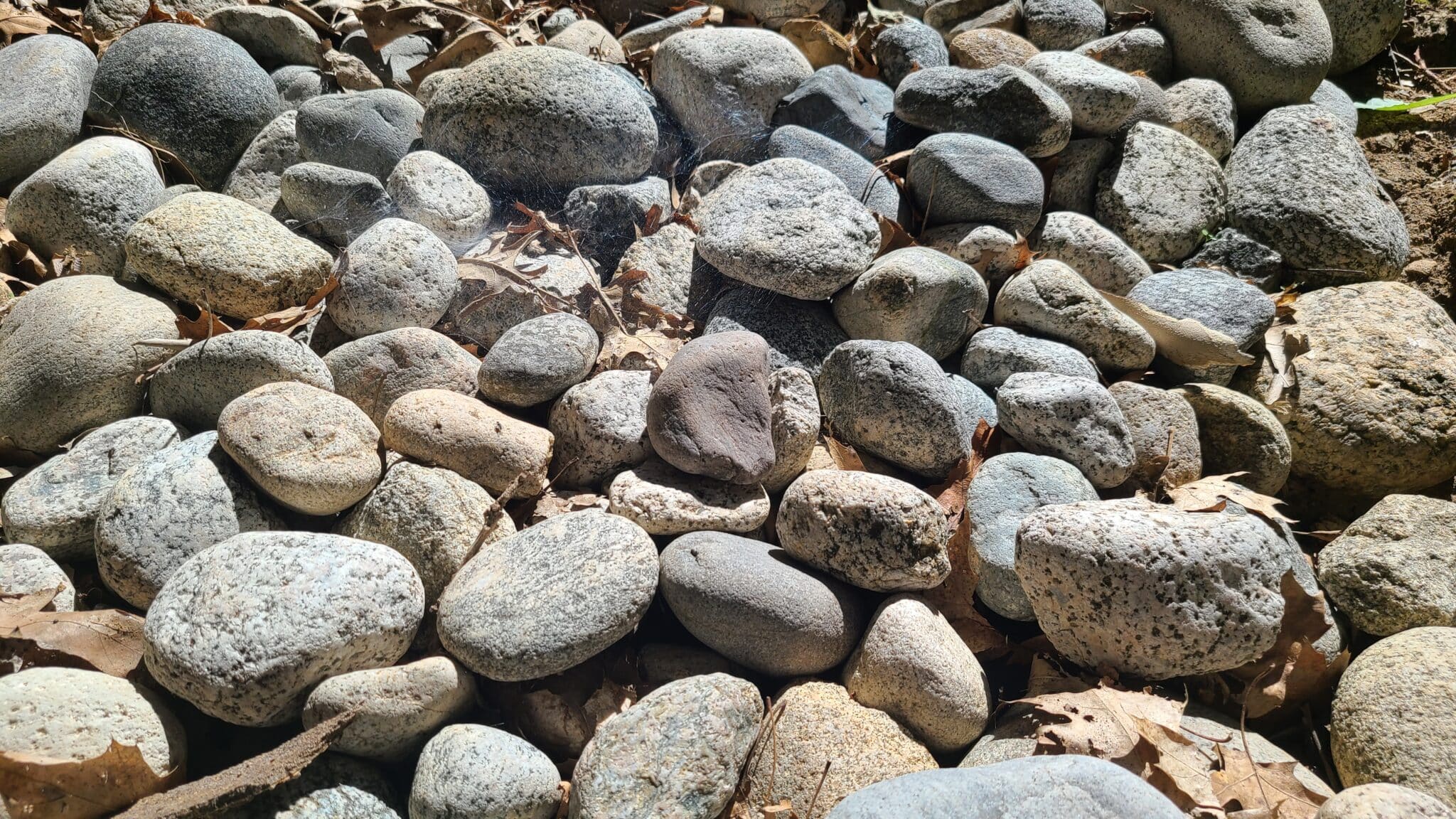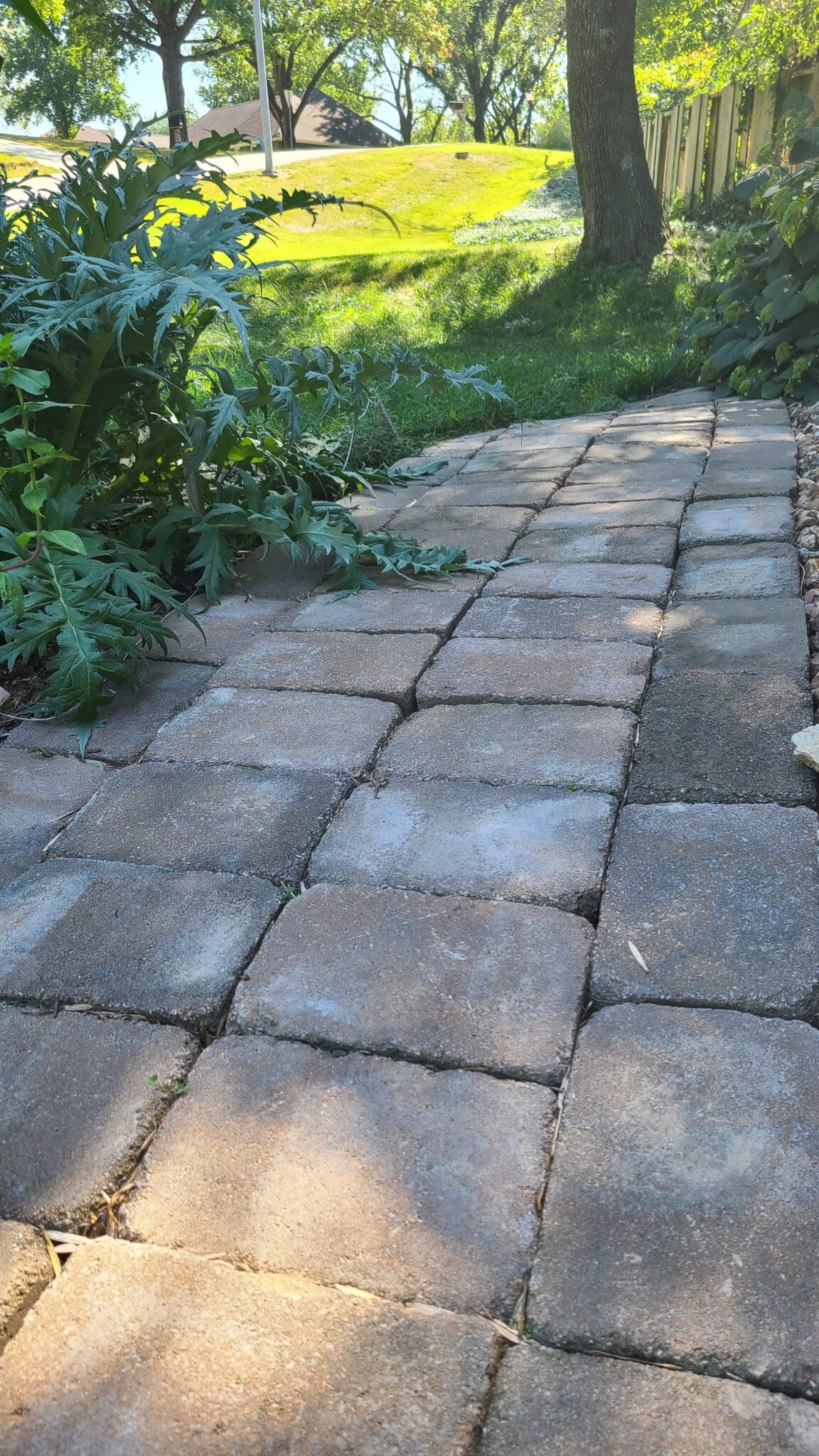The Ultimate Guide to Sustainable Home Improvements For Eco-conscious DIYers
As homeowners and DIY lovers who want to minimize our impact on the environment, we want to ensure our home projects are aiding in this goal of reducing our footprint. But how do you do this? Here is the ultimate sustainable home improvement guide from DIY solar panels and eco-friendly building materials to rainwater collecting and landscaping.

Disclaimer: This post includes affiliate links, and I will earn a commission if you purchase through these links. Read about our privacy policy.
Eco-friendly homes are becoming increasingly popular as people become more environmentally conscious. These homes are designed to minimize their impact on the environment while providing a comfortable living space for their occupants.
Most of us don’t get to start a house from the ground up, but don’t fret because an existing home can be improved to be more environmentally friendly! Some sustainable home improvements require a larger initial investment, while others are more minimal investments. Both can make a positive impact over time, and have long-term benefits in terms of cost savings and environmental impact. For us, that makes the investments worthwhile!
If you’re an eco-conscious DIYer like us, then know that you can do many of your own sustainable home improvements to try to make your home more eco-friendly. From using eco-friendly building materials and products to incorporating features such as solar panels, energy-efficient appliances, and rainwater collection systems, anyone can move toward creating a more eco-friendly home. We’ve put together this ultimate sustainable home improvement guide to help eco-conscious homeowners and DIYers get started!
Electrify Your Home
One of the best sustainable home improvements is to electrify your home and disconnect from fossil fuel and nonrenewable energy sources like gas. This could be swapping out gas-powered appliances and heating to installing renewable energy sources like solar panels.
Now that can sound daunting, but it can be a long-term goal and doesn’t have to be all or nothing. Slow improvements over time can make a difference. After making sustainable home improvements over six years, we finally disconnected from our gas utility and run solely on electricity. Much of it comes from a solar panel system we installed ourselves!
Related – Are Solar Panels At Home Right for You?
Beyond reducing your carbon footprint, the benefits of electrification are that it can lead to lower bills, reduced maintenance costs, quieter operations, and improved temperature control.
Also, if you camp or use generators a lot, you might also consider switching to a solar-powered generator like Jackery or some of the other top solar generator brands.
Increase Your Home’s Energy Efficiency
Improving energy efficiency is one of the most important steps in creating an eco-friendly home. Your home’s energy efficiency makes a difference. Ideally, we’d all use less energy to reduce our footprint, but reducing the amount of energy used by items in your home and having a well-sealed home can be widely impactful as well.
There are four key areas of energy efficiency in homes: appliances, insulation, windows and doors, and lighting.
Get A Home Energy Audit
Before you can dive into the four energy efficiency areas, you really need to know how well your home is performing and have a strategy for making decisions and investments.
Professional services or even your local utility provider will offer energy assessments to help you evaluate where your home’s inefficiencies are. Once you know where the inefficiencies are then it’s easier to create a plan of action to get the most bang for your buck.
Some companies charge for an energy audit depending on the audit level you request, but some basic energy audits are offered for free during special campaigns. The free audits will typically cover some basics like looking at fixture flows, insulation, and lights, so they’re nice but don’t expect to get answers on everything. Although paying for an audit might seem unnecessary, many times there are rebates or tax credits offered by the state, the government, or the provider to mitigate the initial cost. Either way, do a quick search and sign up for an audit, and you’re on your way to having some answers.
Install Energy-Efficient Appliances
Once you have a plan, installing new energy-efficient appliances is one area you can consider to improve your home. Energy-star boasts saving households around $450 each year by choosing an energy-efficient product with their ratings, and can help prevent tons of greenhouse emissions.
Energy Star has a vast database of specific models and comparisons to help you pick the right energy-efficient appliance. As a homeowner, I like to look at their full product list to give me ideas on what appliances even have better options. We know the typical appliances like a fridge, stoves, washers and dryers, but there’s much more than that.
Consider beyond your typical appliances. For example, as part of electrifying our home, we switched out our old furnace and air conditioner for a single Heat Pump heating and cooling system. We also switched our gas-powered hot water heater for an energy-efficient electric heat pump water heater. These of course tend to be larger investments than more standard appliances, but the long-term energy savings make it worth it as well as reducing the carbon footprint by eliminating gas usage.
Local home improvement stores like Home Depot and Lowe’s both have a ton of highly rated Energy-star rated appliances that make purchasing them easy. This is super convenient too for DIYers who probably have these stores close by and accessible (although they do have pro services that can do the installations too, if needed).
Consider Donating Old Appliances
If you’re upgrading appliances and the old one is still in working condition, then consider donating the old appliance. While installing a less efficient appliance in another house seems a little counterintuitive, reuse of the appliance is better than potentially having it sit in a landfill. We donated our old water heater to Habitat for Humanity’s ReStore. If it can’t be donated, find a place that will properly recycle the appliance, so it doesn’t add to our society’s waste problem.
Reduce Heat Transfer By Adding Insulation
Another key area of improvement is insulation. Insulation was one of our first DIY projects when we moved into our home because my engineer hubby was always worried about heat transfer in an older home. Insulation helps to prevent heat transfer between the interior and exterior of the home, keeping the home cool in the summer and warm in the winter. Proper insulation is essential for reducing energy waste and maintaining a comfortable temperature in the home.
Here are a few tips we know for improving insulation in the home:
- Add Insulation in the Attic/Roof– Up to a quarter of heat can be lost through a roof, and many houses don’t have the correct amount of insulation in their attics/roofs. Even in new construction, they sometimes skimp out on the insulation putting only the bare minimum amount required and lower R-value. Look up the recommended depth and R-values for your climate zone on Energy Star. Adding insulation through an attic access panel can be a pretty simple one-day DIY project that improves your home’s efficiency greatly.
- Add Insulation to Walls & Floors, if possible – This might be hard if you don’t have easy access to the wall/floor cavities or if you’re not demoing a space. But if you’re in an older home or doing some renovations consider bolstering the insulation in these areas to help reduce heat loss.
- Choose insulation materials with a high R-value – R-value is the thermal resistance of a material. The higher the R-value, the better the insulation’s ability to resist heat traveling through it, thus maximizing the effectiveness of the insulation. There are a variety of types of eco-friendly and recycled insulation that make great options to improve your home energy efficiency in an environmentally friendly way.
- Seal air leaks around windows, doors, and other openings – Beyond insulation itself, these areas tend to leak out small amounts of air. Sealing them up or adjusting alignments to create better seals can help quite a bit. We’ve adjusted a fair amount of doors and how they hung in our house to cut down on drafts!
Improving your home’s insulation is one of the more minimal investments you can make that makes a big difference in overall heat loss. With less heat loss, the home will stay at more consistent temperatures making your heating and cooling appliances work less and save energy.
Upgrade Windows and Doors
Windows and doors can be a significant source of energy loss in the home. Poorly insulated windows and doors can allow heat to escape in the winter and enter in the summer, making it more difficult to maintain a comfortable temperature in the home. This is especially true if the windows use single pane glass or don’t seal well.
There are a few ways to improve the energy efficiency of windows and doors:
- Install double-paned or triple-paned windows with low-emissivity coatings.
- Choose doors with weather stripping and a tight seal.
- Install window coverings such as blinds or curtains to reduce heat transfer.
It can be small changes or larger investments depending on your situation. As a DIYer, we save money by installing things ourselves when we can. We swapped out several of our home’s original doors for new, properly sealing doors from Menards. However, when it came to replacing all our windows for triple-pane windows, we let a professional team do that as none of our home’s windows were standard sizing. The best part of home improvement is you get to make the decisions on what you want to take on!
Again don’t forget to donate or recycle what windows and doors you remove to help reduce your project’s waste.
Switch Out Lighting
Lighting can also play a role in energy efficiency in the home. Choosing energy-efficient lighting options can reduce energy waste and save money on energy bills.
There are a few ways to improve lighting efficiency in the home:
- Choose LED light bulbs instead of fluorescent or incandescent bulbs.
- Use natural light whenever possible to reduce the need for artificial lighting.
- Install motion sensors or timers to automatically turn lights off when not in use.
- Utilize smart switches to help automatically turn off lights in another room or by a certain time at night. Ours is synced up to a schedule with our Google home.
We bought a flipped 1970s house that had a mix of incandescent and LED lights, and switching out the incandescent lights was one of our first projects after moving in. It’s important to make the switch as LED lights last longer and typically use more than 75% less energy, making them better for the environment and your wallet!
Improve Your Home’s Water Conservation
Water conservation is an essential component of an eco-friendly home. By using efficient fixtures and appliances and utilizing proper maintenance practices, homeowners can minimize water usage and reduce their environmental impact. There are several ways to conserve water in the home, including the use of low-flow fixtures and rainwater harvesting.
Low-Flow Fixtures
One of the easiest ways to conserve water in the home is by installing low-flow fixtures. These fixtures reduce the amount of water used without sacrificing performance. For example, a low-flow toilet uses only 1.6 gallons per flush, compared to the 3.5 to 7 gallons used by older models. Low-flow showerheads and faucets also reduce water usage by up to 50%.
We have a dual flush toilet that makes reducing water consumption easy. When choosing low-flow plumbing fixtures and products, look for WaterSense labels for better water efficiency.
Rainwater Harvesting & Greywater Usage
Rainwater harvesting is another effective method for conserving water in the home. This method involves collecting and storing rainwater for later use. The collected water can then be used for irrigation, flushing toilets, washing clothes, and more (Check out our rainwater harvesting 101).
Personally, we love rain barrels as they are a simple and affordable way to collect rainwater. These barrels are connected to downspouts and collect rainwater from the roof. The collected water can then be used for outdoor watering or other non-potable uses. We designed a stacked rain barrel system to collect rainwater for our backyard garden space and containers on our deck space.
Homeowners can also install more advanced rainwater harvesting systems that can collect and store larger amounts of water. These systems can be integrated into the home’s plumbing system, allowing the collected water to be used for indoor purposes as well. However, installing what are called greywater systems in a home typically requires some permitting and plumbing systems will need reworking, so take that into account. Grey water can also come from sink and shower drains and then that water filters through the system.
By using low-flow fixtures and rainwater harvesting methods, homeowners can significantly reduce their water usage and contribute to a more sustainable future.
Improving Indoor Air Quality
Ensuring good indoor air quality is crucial for maintaining a healthy living environment. Poor indoor air quality can cause respiratory problems, allergies, and other health issues. An eco-friendly home should consider indoor air quality by incorporating proper ventilation and using non-toxic paints and finishes.
Ventilation & Filters
Proper ventilation is essential for maintaining good indoor air quality. It helps to remove pollutants and allergens from the air and bring in fresh air from outside. A well-ventilated home can also reduce the risk of mold and mildew growth.
There are several ways to improve ventilation in an eco-friendly home. One option is to install a more energy-efficient mechanical ventilation system that uses fans or heat recovery ventilators to circulate air throughout the home. Another option is to use natural ventilation by opening windows and doors or using passive ventilation systems such as skylights and vents.
Also, look at the air filter your HVAC system is using. The air filter is essential for trapping dust and allergens from entering the air you breathe. Having a good, clean filter helps promote proper air filtration and keeps your HVAC system from running inefficiently, leading to higher bills and possibly system failure. You can utilize a reusable washable air filter that doesn’t require you to replace and throw away a filter every 3-6 months. It’s a small, but powerful sustainable swap.
Non-Toxic Paints and Finishes
One of the easiest ways to make a home more eco-friendly is to use non-toxic paints and finishes. Traditional paints and finishes contain volatile organic compounds (VOCs) that can be harmful to the environment and human health. VOCs are released into the air during application and can continue to off-gas for weeks or even months after drying. This can lead to poor indoor air quality and potential health problems for those exposed. As you make home improvements, consider using non-toxic paints and finishes that are free from VOCs and other harmful chemicals.
There are several eco-friendly options for paints and finishes, including natural paints made from ingredients such as clay, lime, and milk protein. These paints are non-toxic, biodegradable, and emit little to no VOCs. Other options include low-VOC paints and finishes that are manufactured using fewer harmful chemicals. There are many eco-friendly options that you can pick up from home improvement stores or order online from green companies like Ecos Paints.
Related – How To Create A Bold Accent Wall Using Leftover Paint
Be careful what you pick off the shelves for wood finishes as many have chemicals that essentially turn wood toxic, and can degrade air quality when used. However, there are more environmentally friendly alternatives like water-based or natural oil-based finishes. Rubio Monocoat has several zero VOC finishes for wood projects. It’s by far our favorite wood finish both for the quality and the environmental impact on our air.
Overall, choosing non-toxic paints and finishes is a simple yet effective way to make eco-friendly home improvements. By making this small change, homeowners can improve indoor air quality and reduce their impact on the environment.
Create Sustainable Landscapes & Outdoor Spaces
Sustainable home improvements don’t only happen on the interior of a home, but also the exterior of the house. Landscaping and outdoor spaces are an important aspect of an eco-friendly home. From small to big changes, DIYers and homeowners can create beautiful outdoor spaces that are multi-functional and beneficial to the environment.
Have A Productive Garden
Adding a productive garden full of vegetables, fruits, and herbs is a great sustainable home improvement. Having a garden can give you fresh produce within walking distance helping to reduce its footprint in regards to transportation and water consumption. Depending on how you manage the garden, it can also help reduce the amount of pesticides on the food that you consume.
Whether you create designated raised beds, a terraced vegetable garden like us, or simply stick to planter boxes and containers, you can have a productive garden wherever you are.
We built our terraced garden on the slope of our front yard as it was the only place to maximize sun and it helped with erosion issues. It allows us to produce pounds and pounds of vegetables, fruits, herbs, and flowers each year. It’s so abundant that we are able to can and preserve a lot of it to use in the winter months, which cuts down on our grocery bills.
Related – 18 Ways We Homestead In The Suburbs To Live More Sustainably
Choose Lawn Alternatives & Eco-friendly Lawn Care
For many homeowners, you likely have some typical turf lawn around your home as that’s just the standard landscaping. However, turf lawns are non-native species that have shallow roots and require mowing, high water consumption, and fertilization to keep in “ideal” green condition.
Another outdoor sustainable home improvement you can consider as an eco-conscious DIYer or homeowner is converting those lawn spaces to planting beds or trying a lawn alternative like clover or another groundcover. You can also simply practice more eco-friendly lawn care practices like utilizing battery-powered landscaping tools instead of gas-powered ones.
We’ve slowly been converting our turf lawn over to either clover, planting beds, or productive garden space. We still have some lawn areas with plans for the future to continue to convert them to food or pollinator gardens.
Check out more of our tips for eco-friendly lawn care and recommendations.
Create Pollinator Habitats & Use Native Plants
One way to make your outdoor spaces more eco-friendly is to use native plants. Native plants are adapted to the local climate and require less water and maintenance. They also provide habitat for local wildlife. Homeowners can use a variety of native plants in their landscaping, such as wildflowers, perennials, shrubs, and trees. It’s a great DIY project and can even be done in phases to help break up the costs.
Using native plants can also help reduce the use of pesticides and fertilizers, which can harm the environment. Native plants are more resistant to pests and diseases, and they can also help improve soil health.
You can typically find a local native plant list online from the state websites, extension centers, a botanical garden, or even universities. A quick internet search for “native plant list” along with your city’s or state’s name will usually give you a good place to start. We’re in Missouri, and I love utilizing Missouri Botancial Garden or Grow Native’s detailed info. Then find some inspiration on Pinterest and get started designing a pollinator garden or simply swapping out areas with native plants.
As we slowly remove more turf lawn in our yard, we design pollinator gardens that not only utilize native plants but also attract more pollinators. This in turn boosts our fruit and vegetable yields from our main terraced garden. It’s creating and working with the ecosystem to be beneficial to us, animals and insects, and our environment.
Related – This Is Why We Love Gardening – Spring 2023 Tour
Opt For Permeable Surfaces
Another way to make your outdoor space eco-friendly is to use permeable surfaces. Permeable surfaces allow water to soak into the ground, reducing runoff and erosion. This can help improve water quality and reduce the risk of flooding.
Homeowners can use a variety of permeable surfaces in their outdoor spaces, such as permeable pavers, gravel, and mulch. These materials can also help reduce the heat island effect, which is when urban areas are significantly warmer than surrounding rural areas due to human activities and increased temperatures caused by hard surfaces radiating heat.
For us eco-conscious DIYers, there is a wide range of projects that can involve permeable surfaces. Here are some quick landscaping ideas:
- Creating or replacing a patio space with permeable pavers
- Creating a pathway through planting beds and other garden spaces
- Create a mulched planting bed around your mailbox
- Create edging around a planting bed
- Using gravel to create a drainage corridor and mitigate erosion in your yard
- Adding gravel or mulch to garden spaces to help retain moisture & reduce water runoff
- Create a gravel seating area around a firepit or play area.
- Using pea gravel or decomposed granite to create garden pathways
- Use gravel or mulch around raised planters to reduce weeds and allow easy access
There are an endless number of projects to do that replace impervious surfaces with permeable ones and help reduce negative environmental impacts.
Through gardening, lawn alternatives, native plants, and permeable surfaces in outdoor spaces, homeowners can make a big impact on the environment. These small changes can help reduce water usage and runoff, improve soil health, provide habitat for local wildlife, and provide hyper-local fresh food.
Use Eco-friendly Building Materials & Products
As you make sustainable home improvements, it’s always important to consider what materials and products are being used. What you use to make a home also impacts the environment. Eco-friendly or green building materials are composed of renewable materials rather than nonrenewable resources.
Here are some types of eco-friendly building materials to consider when starting your next project:
- FSC certified Wood
- Bamboo
- Recycled Materials
- Eco-friendly Insulation
- Eco-friendly Paints
- Eco-friendly Caulks and Adhesives
- Eco-friendly Wood Finishes
Check out our full guide for more details and product recommendations.
Considerations When Building A New Home
If you’re an eco-conscious homeowner looking to build a new home, then many of the above factors still apply, but there are a few further considerations. As a landscape architect, I spent many weeks helping determine the best place to locate a building on a site and there are many factors to consider.
When it comes to building an eco-friendly home, location and orientation are two of the most important factors to consider. The location of the home can have a significant impact on the local ecosystem and surrounding wildlife, and the orientation can affect the energy efficiency of the home.
Climate Considerations
When choosing a location for an eco-friendly home, it’s important to consider the climate of the area.
- Homes in colder climates should be designed to maximize solar heat gain, while homes in warmer climates should be designed to minimize solar heat gain. Solar heat gain simply means there is an increased temperature in a space due to solar radiation.
- Homes in areas with high winds should be designed to withstand those winds and minimize air infiltration.
- Homes in areas prone to flooding or wildfires should be located in areas that are less susceptible to those hazards.
- If you plan on having garden space for growing fruits and vegetables, then consider how the house location would impact the sun and wind in relation to the garden. Structures can create microclimates within an area, changing the overall impact.
Solar Orientation
The orientation of the home can also have a significant impact on its energy efficiency. Homes that are oriented to the south can take advantage of passive solar heating in the winter months, while homes that are oriented to the north can minimize solar gain in the summer months. This of course is for places in the northern hemisphere only, and would be reverse in the southern hemisphere.
To maximize the energy efficiency of the home, it’s important to consider the following factors:
- The position of the home on the lot
- The placement of windows and doors
- The use of shading devices such as overhangs, awnings, and trees
- The use of insulation and air sealing to minimize air infiltration
- The use of high-performance windows and doors to minimize heat loss and gain
Discuss these critical factors of location and orientation with your builder or architect to ensure they are taken into consideration. By carefully considering these factors, homeowners can design and build homes that are comfortable, energy-efficient, and sustainable.
More Sustainable Home Improvements & DIY Projects
Overall, making eco-friendly home improvements is a great option for homeowners and DIYers who want to reduce their impact on the environment while enjoying a comfortable living space. Hopefully, this guide gets you pumped to start some sustainable home improvements and/or DIY projects! Check out some more of our DIY project articles for inspiration!
- How To Sustainably Heat The Home – Heat Pump vs Furnace
- 15 Amazing Woodworking & DIY Projects With Plans And How-To Instructions
- Hubby How To: DIY Stacked Rain Barrel System
- Eco-friendly Building Materials & Products: A Guide For DIYers & Homeowners
- How To Install Solar Panels On A Roof & Connect Them
Hope this guide helped spark inspiration for ways to improve your home in an eco-friendly and sustainable way! Let us know what ways you’re improving your home in the comments below!


Disclaimer: This post includes affiliate links, and I will earn a commission if you purchase through these links. Please note that I’ve linked to these products purely because I recommend them and they are from companies I trust. There is no additional cost to you.

